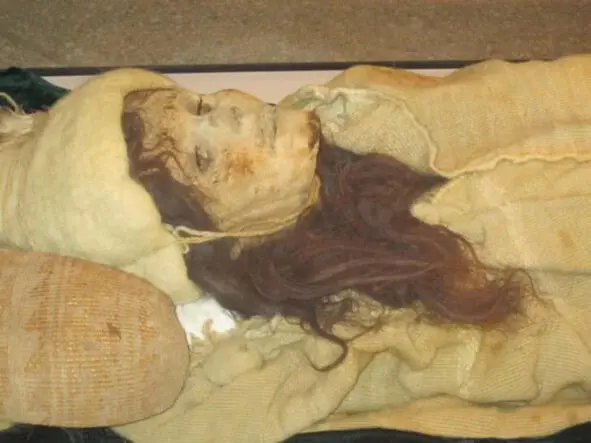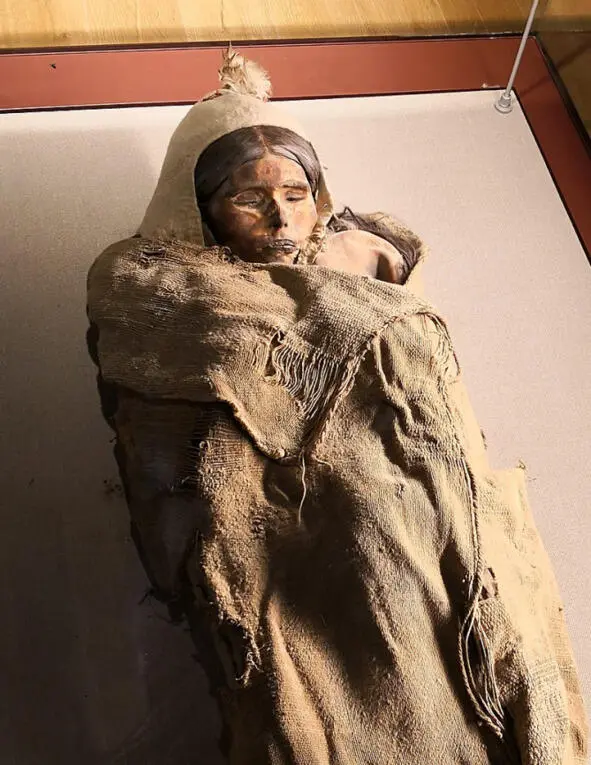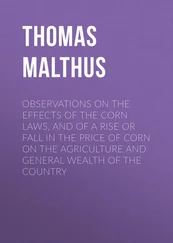

In China, obviously, the people of the Andronovo culture founded the Shang-Yin state, here the parallels in the manufacture of bronze cauldrons of the Shang-yin and later Sarmatians and Huns are extremely interesting. The Andronovites-Huns-Hans, gave the name to China and the Chinese. The self-name of the Chinese is hànzú. (Gansu). Even in the hairstyles of the Chinese-ban-fa there was a trace of the Andronov-Gans.
One of the deities of China is still called Gong-Gong, the Deity of water. The Chinese imagined him with a snake-like body and a human head. Let us recall the giants-giants of Greece, half-snakes, Erichthonia of Athens, also a half-snake. At the crown of Gong-gong there is a thick head of red hair, that is, the traditional Huns’ hairstyle is a shaved head, and the hair is only on the back of the head, and red. In myths, the main enemy of Gong-gong is Chzhuzhong, and even here the legend of the confrontation between the Gongs (Gans) and the Chou (the Chinese proper) remains.
Another interesting find of the Seima-Turbino period is a scraper knife, whose handle is parallel to the blade, that is, the blade is inserted with its lateral edge into the bone handle. The knife was found at the Weijiatai monument, Linxia county, Gansu province (Tian Yuzhan, 1983, p. 76, Debaine-Francfort 1995, fig. 49.8) The name of the whole culture comes from the village of Andronovo near the city of Achinsk, where in August 1914 A. Ya. Tugarinov discovered the first burials.
The formation and formation of the Andronov cultural and historical community took place over several centuries, starting from the turn of the III – II millennium BC. e. The Andronovo culture as a single community took shape on the territory of Kazakhstan by the 16th – 15th centuries. BC.

Andronovo culture ceramics
Within this unity, the Alakul and Fedorov cultures are formed. Alakulskaya spread in Central and Western Kazakhstan, and Fedorovskaya – in the territory of Eastern Kazakhstan. In Central Kazakhstan and Semirechye, signs of both cultures are found simultaneously. Subsequently, the tribes migrated from the territory of Kazakhstan to the east and south, up to Iran. M.P. Gryaznov singled out the materials of the burial grounds he studied in the basin of the river. Ural is the western version of the Andronov culture, which dates back to the XIV – XI centuries. BC e. The Andronovo culture was identified by the Soviet archaeologist S.A. Teploukhov in 1927. Research was also carried out by archaeologist K.V. Salnikov, who in 1948 proposed the first classification of the Andronov culture monuments. He identified three chronological stages: Fedorov, Alakul and Zamaraevsky.

Seima-Turbino culture, State Historical Museum
Currently, the Andronovo culture includes at least four related cultures:
Sintashta-Petrovka-Arkaim (South Urals, northern Kazakhstan, 2200—1600 BC,
– This is the fortification of Sintashta in the Chelyabinsk region, dating back to 1800 BC. e.,
– The settlement of Arkaim, also in the Chelyabinsk region, dating back to 1700 BC e.;
– Alakul (2100—1400 BC), in the area between the Amu Darya and Syr Darya rivers, Kyzyl Kum desert;
– Alekseevka (1300—1100 BC) in eastern Kazakhstan, the influence of Namazga-Tepe VI in Turkmenistan
– Ingalskaya valley in the south of the Tyumen region, in which the monuments of the Alakul, Fedorov and Sargat cultures successively replace each other
– Fyodorovo (1500—1300 BC) in Southern Siberia (for the first time there is cremation and the cult of fire);
– Beshkent region – Vakhsh (Tajikistan), 1000—800 BC e. The spread of the Andronov culture was uneven. In the west, it reached the region of the Urals and the Volga, where it came into contact with the log culture. In the east, the Andronovo culture spread to the Minusinsk depression, partially including the territory of the early Afanasyev culture. In the south, individual material monuments were found in the region of the mountain systems of the Kopetdag (Turkmenistan), Pamir (Tajikistan) and Tien Shan (Kyrgyzstan), in the area of settlement of Dravid-speaking tribes. Considering the problems of the history of the Andronovo cultural unity of metal products, N.A. Avanesova proposed the following periodization scheme: 1) pre-Alakul stage (XVII – XVI centuries BC); 2) the Andronovo culture (XVI – XII centuries BC);
– alakul stage (XV – XIV centuries BC);
– Kozhumberdinsky stage (XIV century BC);
– Fyodorov stage (XIV – XIII centuries BC);
– Zamaraevo-Begazin culture (XII – IX centuries BC) (1979, p. 20—21).
In the late 70s. OH. Margulan, without changing the sequence of genetic succession in the development of the tribes of Central Kazakhstan, proposed a new chronological framework for the stages, lengthening the Nurin stage (synchronous with Fedorov’s) from the end of the 3rd to the beginning of the 2nd millennium BC. e., almost 5 centuries; Atasu (synchronous with Alakul) until the 18th century. BC e., i.e. for 4 centuries, and the transition period to the Late Bronze to the XIII century. BC e., i.e. for one century, leaving the same dating of the Begazy-Dandybaev culture – X – VIII centuries. BC e.
The northern border of the distribution of the Andronovo culture coincides with the border of the taiga. In the Volga basin, there is a noticeable influence of the Srubna culture. Ceramics of the Fedorovo type were found in the Volgograd region. Questions of chronology and cultural affiliation of the Late Bronze Age monuments in Northern Kazakhstan were developed by S. Zdanovich, who singled out the Sargarin culture of the final stage of the Bronze Age, dating it to the X – VIII or even IX – VIII centuries. BC.

Sintashta, bracelet with volute.
In the Siberian steppes, a single economic and cultural type of shepherds-cattle breeders and farmers developed for all Andronovites, the Andronovites lived settled in long-term semi-dugouts. Their settlements were located in river valleys rich in pastures and fertile lands suitable for agriculture. The herd was dominated by cattle, sheep, horses. The Andronovites became the first riders in the Asian steppes. Livestock was kept in pastures for most of the year under the supervision of shepherds, and in winter in special pens. Cereals were cultivated on easy-to-cultivate floodplains. The soil was cultivated by hand with stone and bronze hoes. Hunting and fishing did not have much importance in economic life. They lived poorly, settled in large families in dugouts located quite far from each other; Many times they created settlements, but chaotic, spontaneous, not having a clear plan. Settlements in the form of 10 – 20 large dwellings.

Chariot on a blackened vessel, State Historical Museum
Читать дальше


















